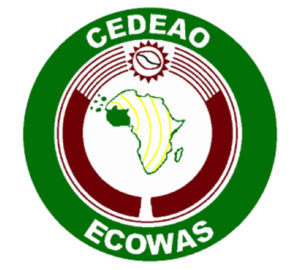Ghana set to promote ECOWAS Signage on Child Protection
 The West Africa Network for the Protection of Children (WAN), in collaboration with the International Organisation for Migration (IOM) has started a process of stakeholder deliberations aim at adopting and promoting the new West Africa Signage of Child protection in Ghana and in the sub-region.
The West Africa Network for the Protection of Children (WAN), in collaboration with the International Organisation for Migration (IOM) has started a process of stakeholder deliberations aim at adopting and promoting the new West Africa Signage of Child protection in Ghana and in the sub-region.
The adoption and use of the signage, in the sub-region, would depict child protection points in the region, a major step towards the rendering of the West African space, safe for children and the youth.
The signage is a circular galvanised sheet depicting the logo of ECOWAS, the flag of the country, two raised palms encircling a boy and a girl with a bright sun in the background, and a text that read: “You are Safe Here”.
The harmonised child Protection Signage, is premised on the fact that some children may find themselves in danger in other countries and may not have nowhere to turn for safety.
Such children, are usually seen loitering around streets, markets, motor parks and communities in their alien countries, thereby, exposing themselves to danger.
Child protection advocates have said that designated place of refuge for “children on the move “was very minimal for the simple reason that there was no known harmonised depiction or representation of a place of refuge in West Africa.
Speaking at the stakeholder forum in Accra, Ms Vida Asamani Amoako, WAN Coordinator for Ghana, said the meeting was being organised for child protection activists to be able to promote the child protection signage which would signify a safe Ghanaian environment for children.
The stakeholders included participants from the Department of Social Welfare, Ghana Health services, United Nation High Commission for Refugees (UNHCR), IOM and other child protection advocates.
The promotion of the signage would involve sensitisation of communities, and the training programmes for those personnel who would man such safe places, as part of the promotion of the signage in the country.
Ms Amoako who later spoke with the Ghana News Agency in a separate interview, said before the introduction of the signage, Ghana and many of the countries did not have any proper means of identifying and helping children in such difficult and dangerous situation.
She explained that the signage would therefore, help children or youth on the move- those who have voluntarily or by force or fraudulently been induced to leave their villages, towns, region of country or origin for a known or unknown destination, to easily identifying safe places where they could easily walk in for safety.
Ms Amoako said these safe places, that might include boarders of strong migratory flows, offices of child protection organisations, public health facilities, homes of authorities or elected officials, among others, would then serve as a safe heaven, providing security, and simple immediate need like food, and then are referred to trained child protection service providers.
She said such children would be cared for and protected while their origins would later be traced through other WAN counterparts in West Africa, and be sent back home, to either be put into a trade or send to school, based on the preference of the said child.
She said when children are identified, their families are located and assessed to see if they could accept and keep the child back, and if that was possible, the child was then prepared and sent to their parent mostly at the border towns, and later provided support for the immediate family to care for the returned child.
Ms Amoako disclosed WAN had already identified about 250 children, most of who were girls, processed and sent back from Ghana to their home countries in Nigeria, Niger, Togo, Burkina Faso, Benin and Liberia.
“We want to be able to move the process of ensuring that children who are vulnerable and find themselves in trouble in Ghana will find a place that they could go to and be helped.
“So, we are looking at stakeholders coming in to help us to produce the signage, to disseminate and to be able to educate the general public on the signage to ensure that children in our space are protected”, Ms Amoako stated.
Mr Alexandra Billings, project manager, Counter Trafficking Unit, IOM, said the need for ensuring the safety of children was paramount and therefore commended ECOWAS Commission for adopting the signage and approved for its use in West Africa in April 2018.
In that last 10 years, 9,000 children and youth on the move who found themselves in difficulties as a result of their travels benefitted from services of protection provided by about 500 communicating and collaborating state and non-state members of the WAN.
Source: GNA
